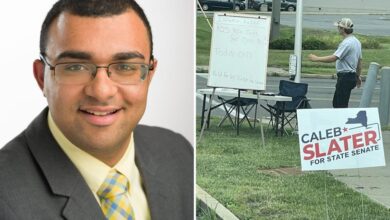Dream of home ownership under threat as costs jump far past median incomes

For generations, buying a home was the surest ticket to middle-class security — a way to build wealth, plant roots, and pass something down to the next generation.
Today, that promise is under siege.
In 2024, the annual income needed to cover monthly payments on a median-priced home jumped to a whopping $126,670, data from the Harvard Joint Center for Housing Studies showed — 60% up from just three years earlier.
Over the same time span, US median household income rose only 1.3% — to $80,610.
“There’s no rush to be a homeowner given that differential,” Laurie Goodman, founder of the Housing Finance Policy Center at the Urban Institute, told Bloomberg.
And the stunning financial gap is just one of many issues, tilting the math of buying against households across the country.
Limited construction since the 2008 financial crisis, combined with homeowners holding on to low-rate mortgages, has kept supply thin.
Labor shortages are making building more expensive, while property taxes climb and billion-dollar natural disasters erode equity.
From 2019 through 2024, property tax bills jumped nearly 50% in Florida, 33% in Dallas, and 32% in Clark County, Nev., which includes Las Vegas, according to data from Cotality.
Building new often costs more than buying an existing home, and labor shortages have slowed construction further.
Crunch the numbers, and the consequences are clear.
The median age of first-time homebuyers climbed to 38 last year from 28 in 1991, the National Association of Realtors reported.
The share of first-time buyers fell to 24%, the lowest since record-keeping began in 1981.
The plummeting figures come as buyers can no longer count on mortgage payments being lower than rent in many markets. As recently as 2021, owning was still as affordable as renting in 21 major markets.
Now the, reverse is true in 49 of the 50 largest metropolitan areas, with renting on average $908 a month cheaper, Realtor.com data showed.
Pittsburgh is the lone exception.
Some states and cities are attempting fixes.
Utah recently earmarked $300 million for low-interest loans aimed at moderate-income buyers, while Rhode Island offers gap financing to spur development of affordable owner-occupied homes.
Minneapolis has partnered with nonprofits on lease-to-buy programs.
Yet for many, the costs and risks of ownership outweigh the benefits.
Some homeowners are even choosing to sell and rent, despite small mortgages.
“I think they overvalue staying in a home,” Daryl Fairweather, chief economist for Redfin said. “Homes are expensive.”
Credit to Nypost AND Peoples



